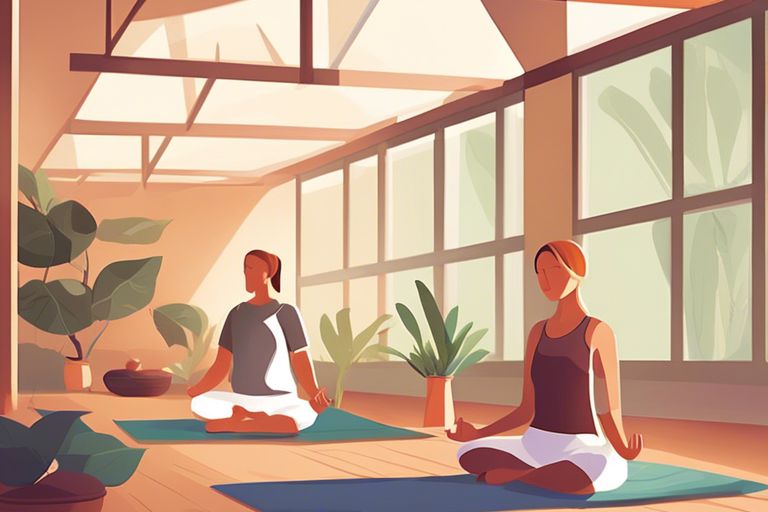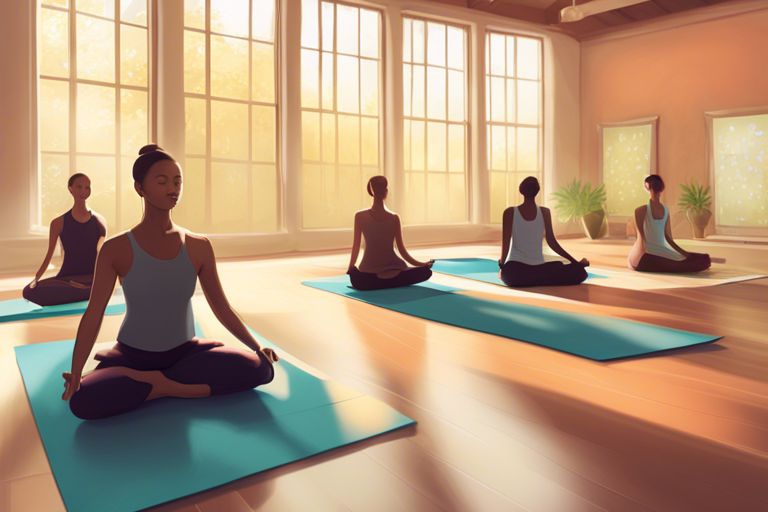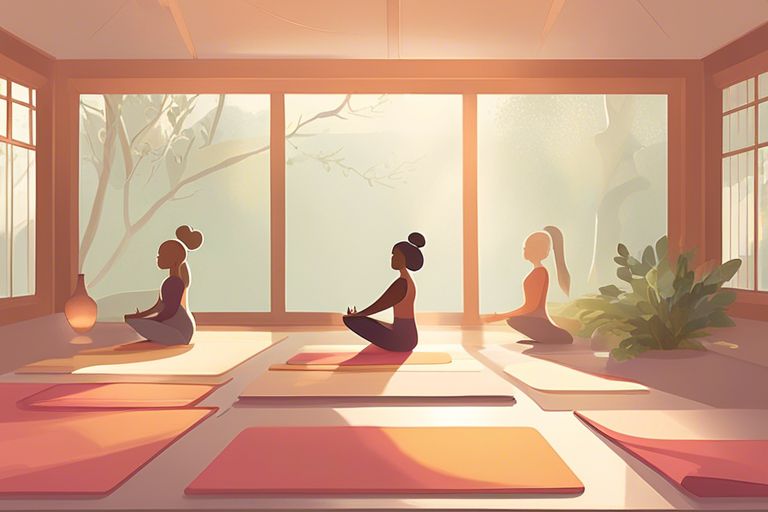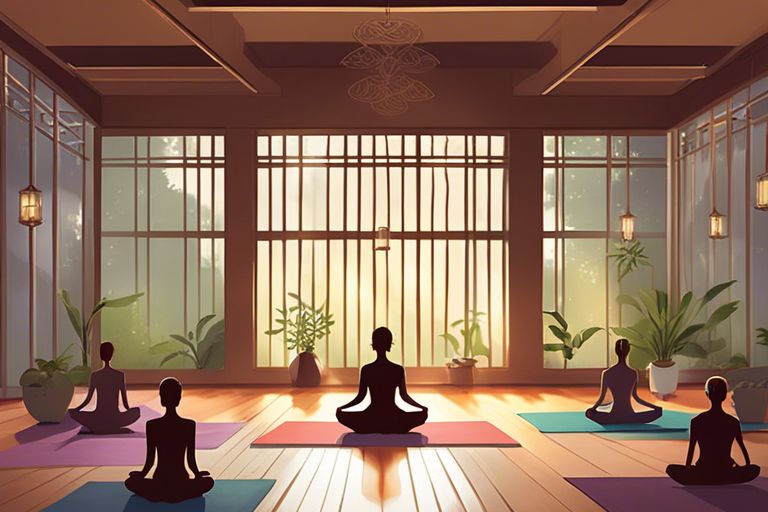Just starting out with yoga and feeling stressed? Look no further, as this beginner-friendly yoga workout routine is here to help you find stress relief in the comfort of your own home. With easy-to-follow poses and gentle stretches, you will soon feel the tension melting away from your body and mind. Say goodbye to stress and hello to a calm and peaceful state with this simple yet effective yoga practice.

Key Takeaways:
- Slow and Gentle Movements: The workout routine focuses on slow and gentle movements which makes it perfect for beginners.
- Stress Relief: This yoga workout routine is specifically designed to help in relieving stress and promoting relaxation through various poses and breathing techniques.
- Accessible for All: The routine is beginner-friendly and accessible for all levels of fitness, making it a great starting point for those new to yoga.
1. Find a quiet space and roll out a yoga mat.
2. Start with deep breathing and gentle stretching exercises.
3. Move into basic yoga poses like child’s pose and cat-cow.
4. Transition to standing poses like mountain pose and warrior I.
5. Practice balancing poses like tree pose and warrior III.
6. End with Savasana, relax on your back and breathe deeply.

Understanding Yoga for Stress Relief
Before plunging into a yoga routine for stress relief, it’s important to understand how yoga can help alleviate stress. Yoga is not just about physical exercise; it also incorporates breathing techniques, meditation, and mindfulness practices. These elements work together to calm your mind, reduce anxiety, and promote relaxation, making it an effective tool for managing stress.
Types of Yoga for Stress Relief
- Hatha Yoga: Focuses on basic poses and breathing exercises, great for beginners.
- Vinyasa Yoga: Flowing sequences that sync movement with breath, promoting a meditative state.
- Yin Yoga: Slow-paced poses held for longer durations to stretch connective tissues and promote relaxation.
- Restorative Yoga: Uses props to support the body in passive poses, deeply relaxing the muscles.
- Pranayama: Breathing exercises that help calm the mind and reduce stress.
Recognizing which type of yoga appeals to you the most is crucial in creating a practice that you will enjoy and stick to. Each yoga style offers unique benefits, so experiment with different types to find what works best for you.
| Assuming | you are new to yoga, starting with a gentle hatha yoga class may be a good introduction. This slower-paced practice will allow you to focus on alignment and breathing, easing you into the world of yoga. |
| Exploring | other styles like vinyasa or yin yoga can provide different experiences and benefits. Don’t be afraid to try out a few classes to see what resonates with you. |
| Adding | pranayama or breathing exercises to your routine can further enhance your stress-relief benefits by focusing on the breath and calming the mind. |
| Modifying | poses or using props in restorative yoga can help you relax deeply and release tension in the body, perfect for reducing stress levels. |
| Combining | different styles of yoga in your routine can provide a holistic approach to stress relief, addressing both the physical and mental aspects of your well-being. |
Factors to Consider When Choosing a Yoga Routine
Choosing the right yoga routine for stress relief involves considering various factors to ensure that it meets your needs and preferences. Some key factors to keep in mind include:
- Time: Determine how much time you can dedicate to your yoga practice each day or week.
- Intensity: Consider your fitness level and whether you prefer a gentle or more vigorous practice.
- Goals: Identify what you want to achieve through your yoga practice, whether it’s stress relief, flexibility, or strength building.
- Preferences: Take into account your preferences for yoga styles, instructors, class settings, and atmosphere.
- Consistency: Choose a routine that you enjoy and can commit to regularly to reap the full stress-relief benefits of yoga.
Choosing a yoga routine that aligns with these factors will help you establish a sustainable practice that effectively reduces stress and promotes overall well-being. This tailored approach ensures that your yoga practice is enjoyable and beneficial for your mental and physical health in the long run.
Preparing for Your Yoga Practice
The first step to a successful yoga practice is setting up your space and gathering the necessary props and equipment. Ensuring you have everything you need will help you focus solely on your practice without any distractions.
Essential Props and Equipment
If you are a beginner, you may not have all the props and equipment required for a yoga session. However, there are a few basics you should consider investing in to enhance your practice. A yoga mat provides a non-slip surface for your poses and helps cushion your body during floor exercises. A few yoga blocks can assist in reaching the floor if you have tight muscles and help with alignment in certain poses. Lastly, a yoga strap can be used to extend your reach and deepen stretches. These tools are beneficial for your practice and can be found at most sporting goods stores or online.
Tips for Creating a Conducive Practice Environment
With the right environment, you can enhance the benefits of your yoga practice. To create a conducive practice environment, find a quiet and clutter-free area in your home where you can lay down your yoga mat. Dimming the lights and playing soft, calming music can help set the mood for a relaxing practice. Tapping into your senses by lighting candles or burning incense can also add to the peaceful ambiance. Knowing you are in a designated space meant for yoga can help you mentally prepare for your practice and focus entirely on your movements.
- Quiet and clutter-free area
- Dim lights and calming music
- Candles or incense for ambiance
- Knowing you are in a designated yoga space
Step-by-Step Yoga Routine for Stress Relief
Not all yoga routines are created equal when it comes to stress relief. Here’s a beginner-friendly yoga workout routine specifically designed to help you unwind, relax, and let go of stress. Follow this step-by-step guide to reap the benefits of a mind-body practice that promotes calmness and serenity.
| Warm-Up Exercises (5-10 minutes) | Stress-Relieving Postures (20-30 minutes) |
| There’s nothing like gentle movements to prepare your body and mind for the yoga practice ahead. Start with easy stretches and slow breathwork to ease tension and loosen up your muscles. | To release pent-up stress and tension, incorporate stress-relieving postures like Child’s Pose, Cat-Cow Stretch, and Legs Up the Wall into your routine. These poses help to calm the nervous system and promote relaxation. |
Warm-Up Exercises (5-10 minutes)
There’s nothing like gentle movements to prepare your body and mind for the yoga practice ahead. Start with easy stretches and slow breathwork to ease tension and loosen up your muscles.
Stress-Relieving Postures (20-30 minutes)
To release pent-up stress and tension, incorporate stress-relieving postures like Child’s Pose, Cat-Cow Stretch, and Legs Up the Wall into your routine. These poses help to calm the nervous system and promote relaxation.
Step-by-Step: Begin in Child’s Pose, then move into Cat-Cow Stretch, and finish by elevating your legs up the wall for a restorative inversion.
Breathing Techniques and Meditation (10-15 minutes)
The breath is a powerful tool in managing stress. Learn simple breathing techniques like diaphragmatic breathing and alternate nostril breathing to calm your mind and soothe your nervous system. End your practice with a short meditation to further quiet the mind and find inner peace.
Cool-Down and Final Relaxation (5-10 minutes)
An vital part of your yoga practice, the cool-down phase allows your body to return to a state of rest. Incorporate gentle stretches and end with Corpse Pose, allowing your body and mind to fully relax and rejuvenate.
Techniques: Focus on slow, deep breathing and consciously releasing tension from each part of your body during the cool-down. This is your time to unwind and let go of any remaining stress.

Modifying the Routine for Different Needs
Adaptations for Beginners
You might find that some yoga poses are challenging when you’re just starting. That’s completely normal! Take your time and listen to your body as you gradually build strength and flexibility. For beginners, it’s recommended to start with modified versions of poses or use props like blocks or straps to help you achieve the correct alignment. For example, in a forward fold, you can bend your knees slightly to make it more accessible.
Modifications for Common Injuries or Conditions
Even if you have certain injuries or health conditions, you can still enjoy the benefits of yoga. It’s important to communicate with your instructor about any limitations you may have so they can suggest appropriate modifications. For example, if you have a wrist injury, you can do a fist instead of a flat hand in poses like plank or downward dog to alleviate pressure on the wrists.
Different bodies have different needs, so don’t push yourself into poses that cause pain or discomfort. Yoga is about finding what feels good for your body and making adjustments as needed. Remember that there is no one-size-fits-all approach to yoga, and it’s perfectly acceptable to modify poses to suit your individual needs.
Pros and Cons of Yoga for Stress Relief
Once again, let’s look at the pros and cons of practicing yoga for stress relief.
| Benefits | Potential Drawbacks and Precautions |
| Improves flexibility and relaxation | Possible risk of injury if poses are done incorrectly |
| Reduces cortisol levels and promotes relaxation response | May not be suitable for individuals with certain health conditions |
| Enhances mindfulness and focus | Some poses may be challenging for beginners |
Benefits of Yoga for Stress Relief
If you are looking for ways to reduce stress, yoga can be a fantastic tool to add to your routine. Yoga not only improves your physical fitness but also enhances your mental well-being. By incorporating breathing exercises, relaxation techniques, and mindful movements, you can experience a significant reduction in stress levels. Additionally, the practice of yoga helps in calming your mind and promoting a sense of inner peace.
Potential Drawbacks and Precautions
An important aspect of practicing yoga for stress relief is to be aware of the potential drawbacks and take necessary precautions. While yoga can be incredibly beneficial for stress management, it is necessary to approach the practice with caution. Some poses may put strain on certain parts of your body if not performed correctly. It’s important to listen to your body and avoid pushing yourself beyond your limits to prevent injuries.
For instance, if you have any existing health conditions such as hypertension, glaucoma, or back problems, you should consult with your healthcare provider before starting a yoga practice. They can provide guidance on modifications or precautions to take while practicing yoga to ensure your safety and well-being.
Tips for Maintaining a Consistent Practice
To maintain a consistent yoga practice, here are some helpful tips:
- Schedule Your Practice: Make it a priority by setting aside specific time each day for yoga. Treat this as an important commitment to yourself.
- Start Small: If you’re finding it challenging to stick to a routine, begin with shorter sessions that you know you can manage consistently.
- Find an Accountability Partner: Enlist a friend or family member to join you in your practice or check in on your progress.
For long-term success in yoga, consistency is key. Perceiving progress and improvements in your practice can be incredibly motivating and rewarding.
Scheduling and Commitment
For optimal results, stick to a consistent scheduling practice that works best for you. Whether it’s morning yoga to energize your day or evening sessions to wind down, find the time that suits you best. Commit to this schedule like an important appointment that you wouldn’t cancel.
Overcoming Common Obstacles and Plateaus
Scheduling regular yoga sessions can sometimes be challenging, especially when faced with obstacles like work commitments, family obligations, or simply feeling burnt out. A helpful tip is to be flexible and adjust your practice schedule as needed. Remember that it’s okay to have plateaus in your yoga journey; perseverance is key to success.
Final Words
Now that you have learned a beginner-friendly how-to yoga workout routine for stress relief, make sure to practice regularly to experience the full benefits. This routine is designed to help you relax, unwind, and alleviate stress from your mind and body. Remember that consistency is key, so try to incorporate these gentle stretches and poses into your daily or weekly schedule for the best results. If you need more guidance, you can always refer back to the detailed video tutorial on Yoga for Stress-Reduction Beginner-Friendly Poses and Gentle Stretches.
FAQ
Q: Is yoga suitable for beginners?
A: Yes, yoga is an excellent practice for beginners. Many beginner-friendly yoga routines are designed to introduce basic poses and sequences in a gentle way, making it accessible to all levels.
Q: How can yoga help with stress relief?
A: Yoga can help relieve stress by incorporating breathing techniques, meditation, and physical movements that promote relaxation and mindfulness. It can reduce the production of stress hormones and increase the release of feel-good chemicals in the brain.
Q: How often should I do yoga for stress relief?
A: To experience the benefits of yoga for stress relief, aim to practice at least a few times a week. Consistency is key, so finding a routine that works for you and committing to it will help you manage stress more effectively.











